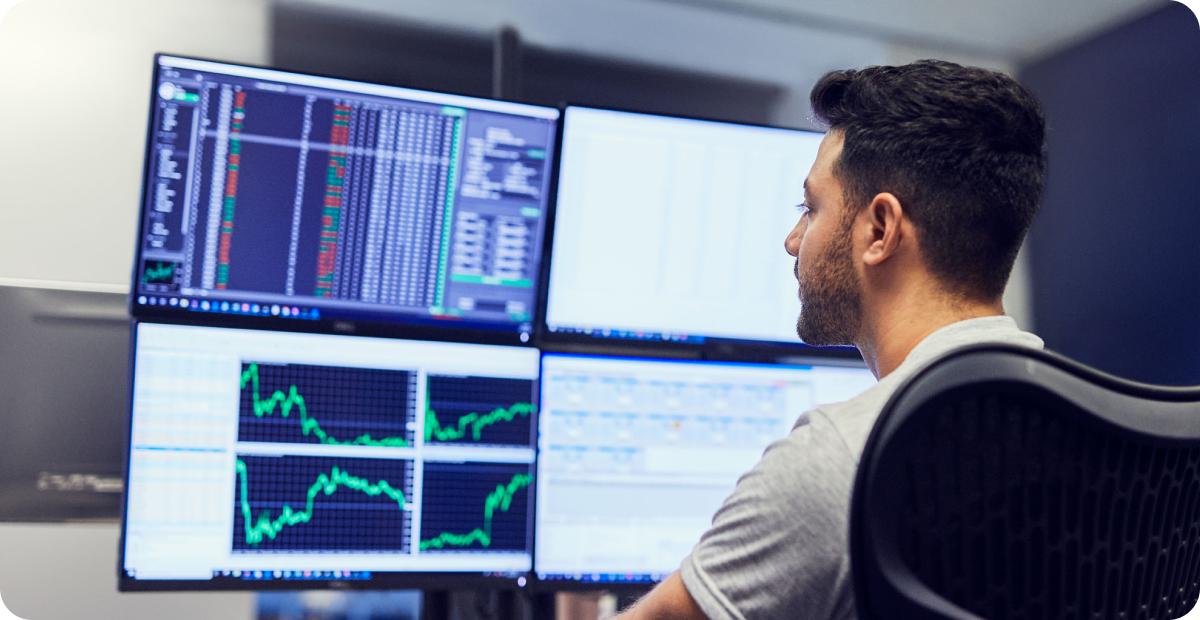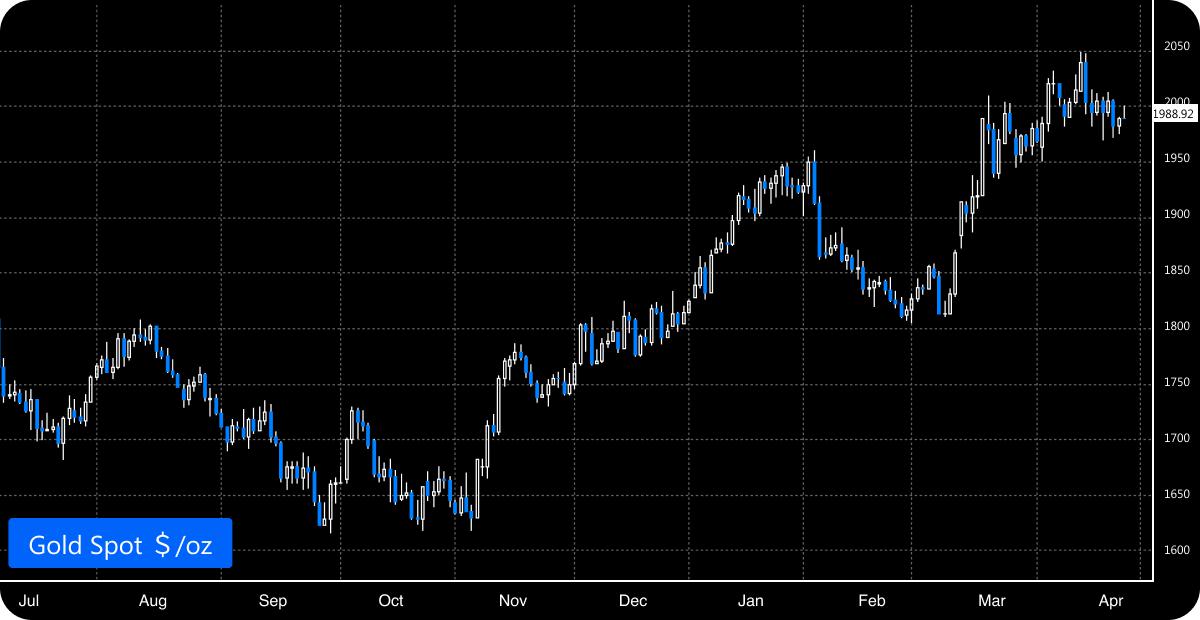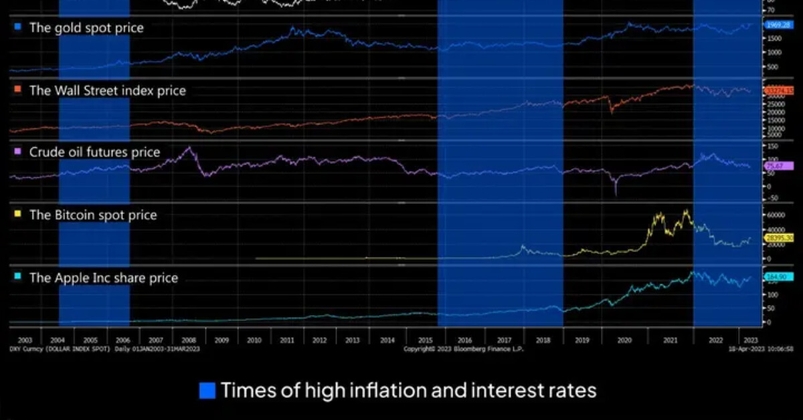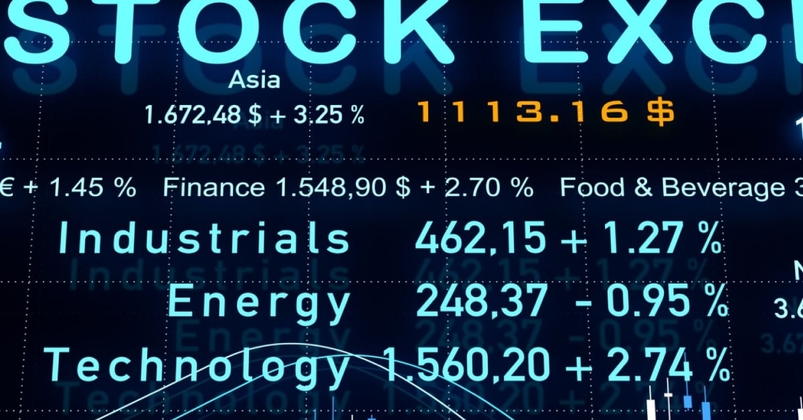- لغة عربية
- English
- 简体中文
- 繁体中文
- ไทย
- Español
- Tiếng Việt
- Português

TL;DR
- Spot trading is a type of trading where traders will speculate on the current price of a market, with their buy and sell positions being filled immediately
- The name from spot trading comes from the fact that you’re trading ‘on the spot’, in real time
- Spot prices are determined by market sentiment, how much buyers are willing to bid for an asset and how much sellers are willing to ask for the same asset
- You can trade any market on the spot, using financial instruments like CFDs
- Spot trading is a great way to access current, ‘raw’ pricing, often for lower costs than futures or forwards of the same market, and to make profits (or losses) quickly
- However, because of their instantaneous nature, spot markets allow very little flexibility and so must be used with a good trading strategy and risk management plan in place
What spot trading is
Spot trading is real-time trading, where you’d speculate on a financial market as it’s currently priced right now.
If you were trading with futures or forwards, you’d be trying to predict what your market would do on or by a certain date in advance. Here, you’re trading ‘on the spot’ (hence the name) and would be predicting what your market’s current price will be doing. You’d start to make a profit or loss immediately with your position in spot trading and, when you choose to close your position, that happens right away too. With futures trading, your position will be closed when it reaches ‘maturity’ at a predefined future date – unless you close it early.
Here’s what a spot market might look when you’re trading:

Whether you choose to spot trade or not, speculating on financial assets at the spot price is a vital form of trading. That’s because people buying and selling at the spot price directly determines what a market’s current price is.
Spot trading versus other types of trading
There are of course other types of trading to get involved in the financial markets, including futures trading (where you’re speculating on a market’s future direction, with profits and losses being realised when you close your position or it comes to maturity in the future) and options (where you’re also speculating on a future price of an asset, with the ‘option’ to let that position expire or to fulfil it). However, spot trading is arguably the most exciting in the same way that many find live performances exciting: because you’re speculating on the market as it is right now – and you’re a part of the action.
.jpg)
How spot trading works
Spot trading is the exchange of an asset, in real time, between buyers and sellers at an agreed-upon price on a financial platform. How this works is that buyers will bid on a certain price in the platform, being matched by their broker with sellers are offering the right price – and vice versa. When there is a match – in other words, buyer and seller both agree on the same price – that order is filled by the broker and platform.
While this sounds like a process, a very large number of transactions is constantly taking place and trades are matched within fractions of a second. Although there are rare exceptions, for example with smaller markets, your order will almost always be automatically filled within split seconds – likely before you’ve even noticed!
Spot Trading works by you forecasting what a market’s current price will do next – whether it’ll go up or down – rather than some way in the future. If you’ve predicted what your market’s spot price will do correctly, you’ll make a profit. If you were incorrect, you’ll make a loss, which will automatically show as being debited from your account balance within the platform right away, instead of on a future date.
Key market players: who determines spot prices?
Well, to a certain extent, you do – and all other active traders. The spot price of a market is its real-time price, without any added-on amounts like overnight funds or futures pricing (we’ll get to both of those later) added in. So, its price is determined by how much traders are selling for (called the asking price) and how much other traders are buying at (called the bid price). When you enter the action, you’ll choose from this range of asking or bidding prices.
Of course, other factors such as macroeconomic conditions, volatility and many other things will determine what price traders are willing to transact at… But, ultimately, the key driver of any spot price will be market sentiment
Spot trading markets
You can spot trade on most assets. Here are just some of the spot trading markets we offer:
- Foreign exchange spot trading
- Commodities spot trading
- Cryptocurrency spot trading
FX markets the spot: Spot trading forex
When you spot trade on the foreign exchange market, you’re making an informed prediction on how much one foreign currency will rise or fall in value as compared with another currency – and you’re speculating on it right now, as it happens. Spot markets have continuous pricing, which means they’re updated with up-to-the-second current information on the markets while you’re trading them. This you’ll do with a forex broker (like Pepperstone) on a trading platform like one of ours.
With forex spot trading, you won’t buy or sell any physical cash in foreign currencies as you would at a bureau de change. Rather, you’ll be forecasting the direction a foreign currency’s current price will be going in as of now, rather than predicting what the currency’s price will be on a specified future date. To do this, you’ll use a type of financial derivative like CFDs or spread bets.
As forex is the biggest, most liquid market in the world, its spot price can change several times in one second. For this reason, among others, most forex trades are made on the spot. With so many people trading spot forex prices, there are trillions made in profit and also lost every single day – which makes spot FX exciting, but also risky.
Spot trading commodities
Commodities like oil, gas, gold and other precious metals – even soft commodities like coffee beans – are popular assets. However, most people don’t have the capital or capacity (not to mention storage facilities) to physically invest in things like oil barrels, livestock, gold bullion or kilograms of soft commodities. So, many people will trade on commodities instead. While many trade commodities via futures, you can trade them cash (another way for saying ‘on the spot’) too. When spot trading on commodities, you’d be speculating on the direction of that commodity’s price in the markets currently, with immediate profits or losses made.
This is in contrast to the other way you can speculate on commodities, which is with futures contracts. With futures contracts you would be predicting the price of that commodity in advance for a certain date in the future, and also agreeing to either receive your profit or forfeit your loss at that time if you haven’t closed out your position before it reaches maturity. With commodity spot trading, you’re speculating on the live market as it happens, and the money changes hands immediately too.
Spot trading cryptocurrencies
Cryptos are often associated with a ‘buy and hold’ strategy, but you can spot trade on their current value in the market too.
Unlike commodities, currencies and every other asset class, cryptocurrencies’ pricing isn’t pegged to a traditional market’s benchmark. Instead, market sentiment is the single biggest factor that determines its worth – which can make spot trading cryptocurrencies an exciting experience, but also a potentially volatile one.
When spot trading cryptos, you’d be buying digital wallets, and the exchange between you and the other trader (over a regulated platform with a trading broker) would be done in real-time. If you correctly predict the direction your chosen crypto market will go in now, this would reflect as a profit in the platform immediately. If you predict incorrectly, you’d instantly forfeit that same amount as a loss.
Spotting pros: The advantages of spot trading
Spot trading is a great way to access real-time pricing. It’s also the best way to know about, and capitalise on, up-to-the-minute trends and movements with any market.
It’s also almost always cheaper than trading any other way. That’s because, when you trade futures, extra costs will be priced into your trade, such as overnight holding fees from your broker and a wider spread (the difference between the buying and selling prices of the asset). These aren’t needed with spot prices, which have narrow spreads and no need for holding onto them long-term, so you’ll require less capital to open a spot trade as you would for a futures position of the same size. This is where spot trading gets its other name: the cash market (because its cost is the live price, cash, without anything else priced in).
Another advantage to spot trading? Futures have many dates and times where individuals and funds can trade, but there’s only one live, real-time market. This can make the spot price the most-traded, most liquid market with the largest number of active traders, making spot trading an exciting and potentially rewarding place to be.
Seeing spots: The risks of spot trading
In any market, one of the most significant risks you’ll face is the possibility of loss – and this is certainly true of spot trading too.
Spot trades are set up and executed immediately, with exchanges taking place ‘on the spot’. This can mean a tendency to trade impulsively and emotionally in many traders, without the level of strategising and planning that maximise the chances of successful positions.
Also, because these deals take place immediately, they are less well-suited to strategies that may require making changes to your position if market conditions – such as hedging, for example. In fact, in general, spot trades are inflexible by nature because they’re so short-term. Generally, on the spot trading is best suited to occasions when you’re extremely confident in your prediction of where the market will go.
For example, say that you wanted to speculate on the price of a forex currency pair. If you were trading using forwards or futures, you’d pick a date in the future which would be the trade’s expiry date. As time goes on, you see that the market is going the opposite way to what you predicted. So, you take out a second position speculating in the opposite direction of your first – a strategy called hedging.
However, if you were trading the forex pair on the spot and opening and closing positions in the space of minutes or seconds (a strategy called scalping) you wouldn’t be able to do this. You’d already be immediately making a loss if the market’s direction went against you, if you were spot trading.
Another risk involves cost. Spot trading is designed for short-term speculation, so you have to be sure that you’re not going to have positions open for more than a few hours. Because they’re not geared for longer-term, spot prices don’t have added overnight funding fees priced into them. This means you’ll incur additional fees if you leave a spot trade open until longer than close of business that same day, and these costs can stack up to be quite expensive quite quickly.
Spot trading strategies
Because spot trades are instant, with no time to pivot, you need to be especially prepared for any eventuality with a good spot trading strategy, if you want to make the most of your chances of success.
Some strategies, such as longer-term position trading, are obviously not meant for spot trading. Others are more popular with spot traders and shorter-term trading styles, which we’ll get into below. First, however, it needs to be said that:
- The most important part of any trading strategy is a good risk management plan
- This involves things like setting stop loss orders and take profit orders
- The most popular high level trading strategies – in other words, those most commonly believed to be the best spot trading strategies – are guidelines and are only supposed to be a start or a signpost on your own trading journey to find the right trading strategy for you. This is something only you can develop, through practise and trial and error
- No strategy, no matter how awesome, is any guarantee of profit. Markets fluctuate unpredictably and a certain result is never a given
Technical analysis strategies for spot trading
Technical analysis involves using chart indicators and following the price action of your market’s chart exclusively to determine where it’ll go next, to maximise your chances of correctly predicting its next move. The most popular spot trading technical strategies include:
- A momentum or trend trading strategy – where traders use a momentum indicator, such as the RSI, to determine the chart’s current trending direction and trade with the trend
- Trading reversals and retracements – rather than trend trading, here traders try and predict when the market will correct itself after a trend or when it’ll start to go in a new direction. To accomplish this, people use various forms of momentum indicators on charts
- Breakout trading strategy – the aim here is for traders to guess when a market will ‘break out’ of its current support and resistance levels, using tools like MACD and MFI indicators and Renko charts to do so
- False breakout trading strategy – similar to a breakout trade strategy, scalpers, day traders and other shorter-term speculators will try and determine when a breakout is likely a false breakout and ‘short’ the breakout
Technical analysis strategies for spot trading
While technical analysis looks at what your market’s chart is doing and uses indicators to make sense of the action, fundamental analysis focuses on the macroeconomic conditions that led to this present moment and uses the context of this to predict what will likely happen next. Some popular spot trading fundamental analysis strategies include:
- Trading on events – where traders will keep an eye on the economic calendar for big events (such as earnings season, the latest meetings of the central bank and their interest rate decisions, Non Farm Payrolls in the United States and more). Traders will garner as much info as possible to make an informed prediction on how markets will react to this event and trade accordingly at the time of the event, or just after
- Trading on headlines – similarly to the above, although less well signposted and more difficult to predict, is speculating based on the news. Traders will follow major geopolitical and economic news and trade based on their predictions as to how they think such headlines will affect market sentiment
How to get started with spot trading
- Choose a respected trading broker like Pepperstone and a platform to use for spot trades
- Create an account with Pepperstone to begin trading
- Find a market you’d like to trade on and study your chosen spot market
- Wait for the right spot trading market conditions, based on your trading strategy
- Open your first spot trade
- Set up stop loss and take profit orders to enhance risk management
- Watch your trade’s progress and close your position when you’re ready or your goals have been achieved
Tips for starting Spot Trading
Expert advice on how to start spot trading
Even with the right information, learning a new way of speculating on the markets can be difficult. That’s why it helps to consult the pros – like our expert market analyst and trade specialist, Chris Weston, Pepperstone’s Head of Research.
Exactly how a spot price is calculated – using crude oil as an example
Have a specific market in mind to spot trade? Check out Weston’s tips for some of our biggest spot markets:
Tips on the spot gold marketTips on the spot crude oil market
Common mistakes to avoid when spot trading
Mistakes are costly – but necessary – ways to learn about trading. Here, we ound up some of the most common spot trading mistakes, so you can learn from others while wasting as little of your own time and money as possible.
Mistake #1: Not paying attention to your timeframes
Just because you’re trading on the spot, with positions being executed instantly, does not mean you only have to look at the very short-term of your market’s chart. Spot traders will frequently be scalpers, and will often look at a one minute timeframe, as far back as a few hours or a few days, before trading.
In any market, context is important. Knowing the history of how your underlying has moved and why it has moved that way will give you a more well-rounded understanding. This will often help you with your predictions as to where the market will go next.
Mistake #2 Going in too fast
Spot trading happens fast – all your positions are filled within split seconds of you placing or closing an order. And, as a general rule, the faster a market moves, the better you should be prepared for your trade. So, take your time to really study the market before opening spot positions. Learn its rhythms, familiarise yourself with your platform’s tools and hone your trading strategy to ensure you only open a position when the market conditions are right for you and your goals.
Mistake #3: Not placing stop loss and take profit orders
The same reasons that make you want to take your time with spot trading, also mean that you need good risk management in place. There’s no room for correction in spot trading, where you’ll be speculating on the current price and buying and selling in real time too.
Setting up a stop loss order to close out your trade for you if the markets go against you, as well as setting up a take profit order to close your position when you hit a certain level of profit, will help you avoid making more loss than you’re comfortable with, and can also prevent you losing any profit you’ve made when the market turns.
Frequently Asked Questions
What is spot trading?
Spot trading is a form of trading where you’ll trade on a market in real time, speculating on the current price. All your positions and orders will be executed immediately as well, as opposed to being filled at a future date later on.
What markets can I trade on the spot?
There are lots of markets you can trade via spot trading, including forex, shares, gold and other commodities, indexes, cryptocurrencies and more. You’ll trade each one at the spot price, which means it’s current price as it is now.
What instruments do I trade spot markets with?
There are different ways to trade on the spot. You’ll be using derivatives, a type of trading product which ‘derives’ its value from the underlying asset you’re trading (for example, deriving its pricing from gold’s real time price rather than being a physical gold coin or bullion).
The most common form of derivatives are CFDs (Contracts for Difference), a type of contract where you’re speculating on how the asset’s spot price will move, making a profit if you predict correctly and a loss if you predict incorrectly. However, if you’re trading in the United Kingdom or Ireland, you can also use spread betting as a derivative to spot trade.
What timeframe should I use when spot trading?
The timeframe you’ll use for your spot trades depends very much on your trading style and goals. If you’re a scalper, you’ll likely use shorter timeframes like one minute or five minutes. If you have a longer-term trading style, like for example a day trader or a swing trader, you would likely use a longer timeframe, for example one hour.
What some traders recommend is using something in between, for example a timeframe of 15 minutes, to get the best of both worlds. You’ll see some of the volatility of the short-term activity which scalpers would trade, while also being able to get a glimpse of the trends longer-term trading styles are interested in. However, there’s no one ‘right’ time frame – it’s your call.
Related articles
لا تُمثل Pepperstone أن المواد المقدمة هنا دقيقة أو حديثة أو كاملة، وبالتالي لا ينبغي الاعتماد عليها على هذا النحو. البيانات، سواء كانت من جهة ثالثة أو غيرها، لا يجب اعتبارها توصية؛ أو عرض لشراء أو بيع؛ أو دعوة لعرض لشراء أو بيع أي أمان، منتج مالي أو صك؛ أو المشاركة في أي استراتيجية تداول معينة. لا تأخذ في الاعتبار الوضع المالي للقراء أو أهداف الاستثمار الخاصة بهم. ننصح أي قارئ لهذا المحتوى بطلب نصيحته الخاصة. بدون موافقة Pepperstone، لا يُسمح بإعادة إنتاج أو إعادة توزيع هذه المعلومات.


